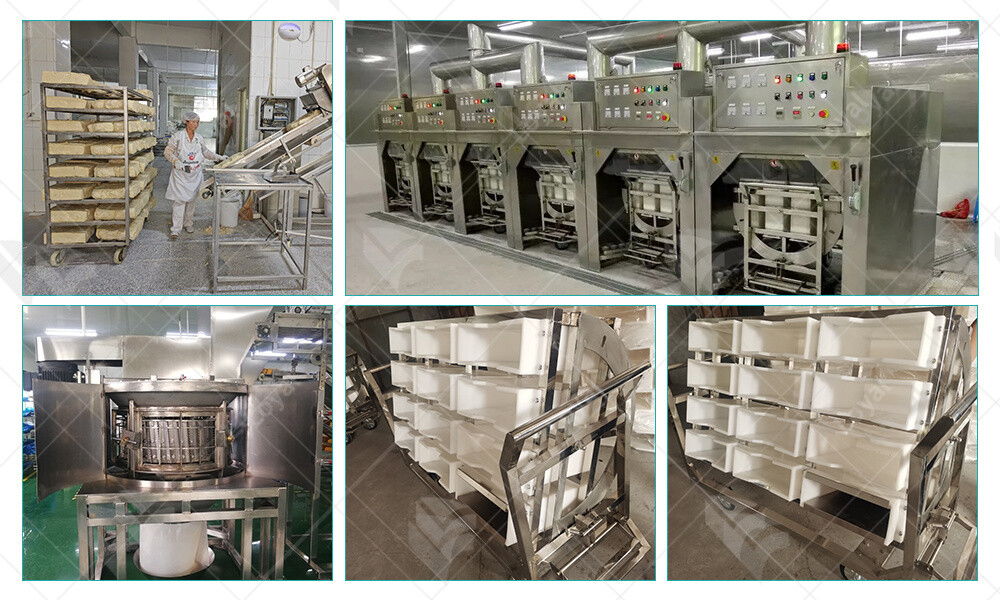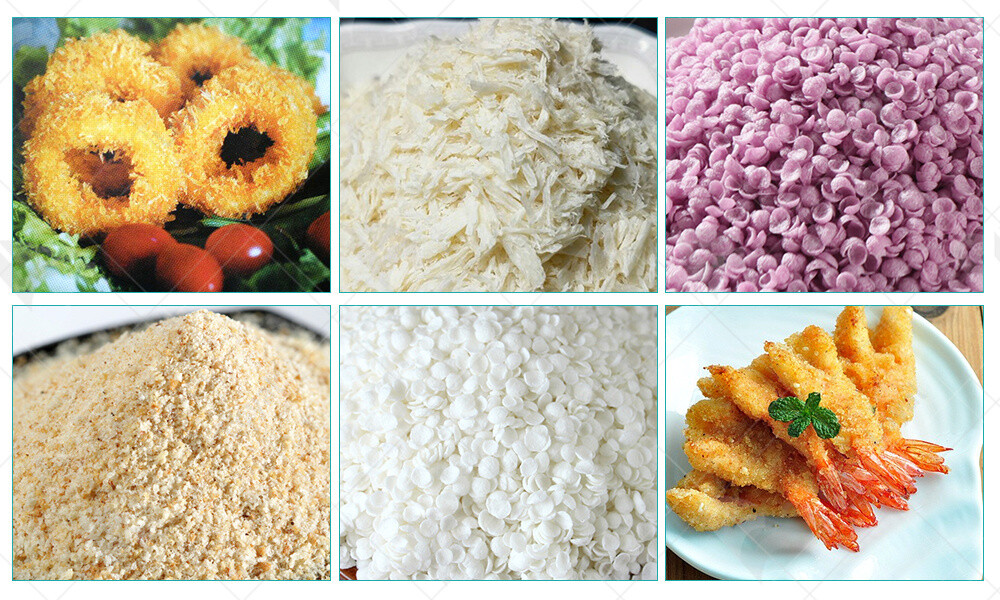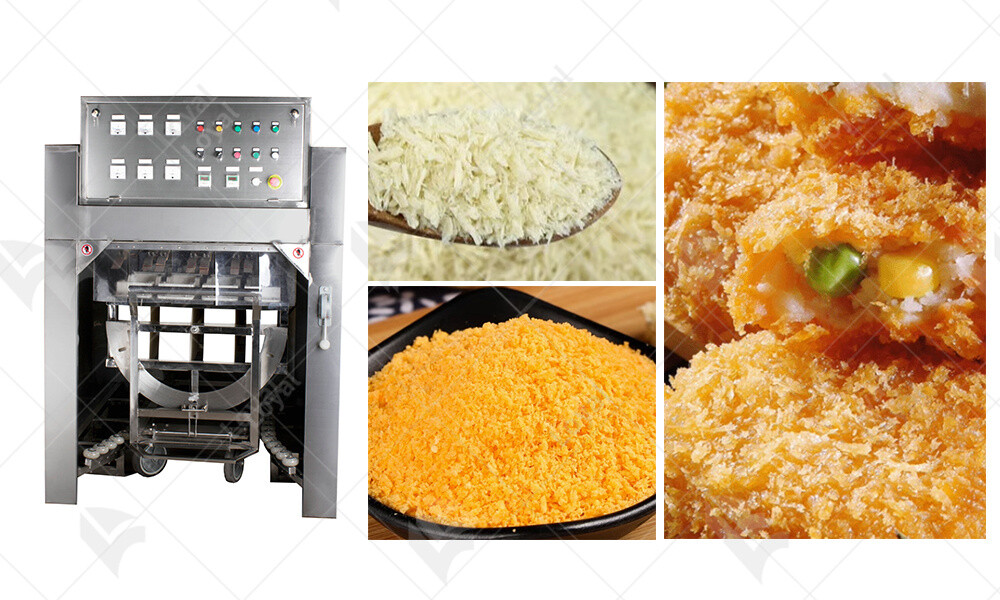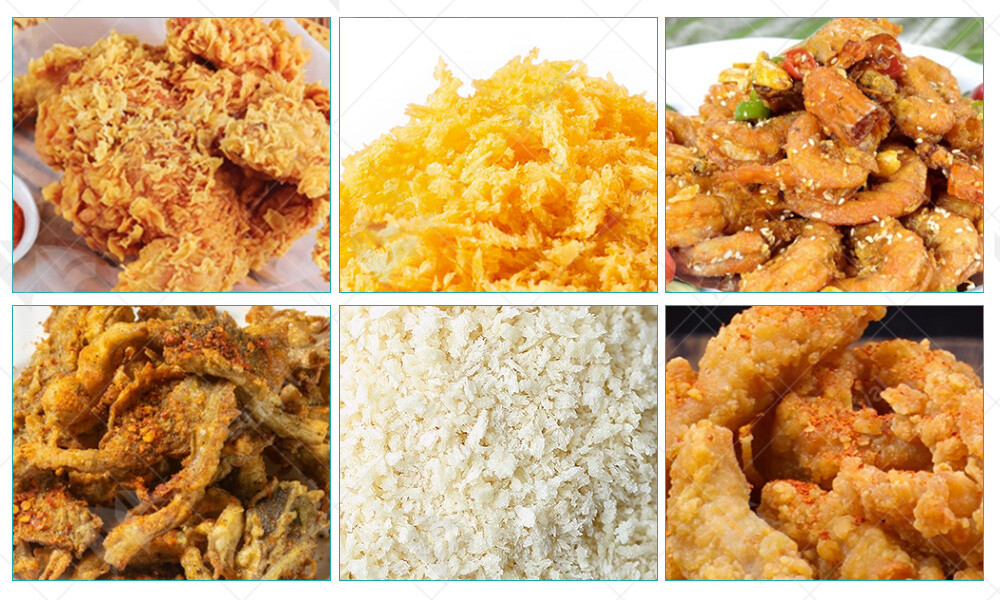The Ultimate bread crumbs production line Guide to 2024
Introduction to Bread Crumbs Production Lines
Bread crumbs production lines are essential in the food industry, transforming bread into versatile crumbs used in various culinary applications. These production lines comprise a series of machines designed to efficiently and consistently produce high-quality bread crumbs. The primary stages in a bread crumbs production line include bread slicing, drying, grinding, and sieving, each contributing to the final product's texture and consistency.
The initial step in the bread crumbs production line involves slicing bread into uniform pieces. This process ensures that the bread is evenly dried, which is crucial for producing consistent crumbs. Industrial slicers are employed to achieve the desired thickness, which can be adjusted based on the specific requirements of the production line. Ensuring uniformity at this stage is critical, as it directly impacts the drying and grinding processes that follow.
Drying is a vital phase in the bread crumbs production line, as it removes moisture from the bread slices, preventing mold growth and extending the shelf life of the crumbs. Various drying methods, such as convection ovens or continuous belt dryers, can be used depending on the production scale and desired crumb characteristics. Proper drying ensures that the bread is adequately prepared for the grinding process, resulting in a consistent final product.
Grinding is the next critical step in the bread crumbs production line, where the dried bread slices are ground into crumbs of specific sizes. Industrial grinders or mills are used to achieve the desired crumb size, which can vary from coarse to fine depending on the application. This process is crucial in determining the texture and application of the final product, as different recipes require different crumb sizes.
The sieving process in the bread crumbs production line ensures that the crumbs are sorted by size and quality. Sieves or vibrating screens separate the crumbs into different size fractions, removing any larger particles or unwanted materials. This step guarantees that the final product meets the required specifications for various culinary uses, ensuring consistency and quality in every batch produced.

Key Components of a Bread Crumbs Production Line
A bread crumbs production line consists of several crucial components that work together to produce high-quality bread crumbs efficiently. Understanding these components is essential for optimizing the production process and ensuring consistent product quality.
Component | Description |
Dough Mixer | Mixes ingredients to form a uniform dough. |
Dough Feeder | Feeds the dough into the forming machine. |
Forming Machine | Shapes the dough into desired sizes and shapes. |
Baking Oven | Bakes the formed dough pieces to the required texture. |
Cooling Conveyor | Cools down baked products before further processing. |
Crusher | Crumbles the baked products into bread crumbs. |
Sifter | Ensures uniform crumb size by removing oversized particles. |
Packaging Machine | Packages the finished bread crumbs into desired quantities. |
Control Panel | Monitors and controls the entire production line. |
Quality Inspection Station | Checks the final product for consistency and quality. |
Each component plays a vital role in the bread crumbs production line, ensuring efficiency and high-quality output. Proper maintenance and synchronization of these components are crucial for a seamless production process.

Choosing the Right Equipment for Your Production Line
Selecting the right equipment for your bread crumbs production line is crucial for ensuring efficiency and product quality. The first step is to identify the specific needs of your production line, such as the volume of bread crumbs you plan to produce and the type of crumbs (fine, coarse, flavored) you want to manufacture. Understanding these requirements will help you determine the essential machinery components, such as mixers, ovens, grinders, and packaging units.
When choosing equipment, consider the quality and durability of the machines. Industrial bread crumbs production lines require robust and reliable equipment to handle continuous, high-volume production. Investing in high-quality machines can minimize downtime and maintenance costs, thus enhancing overall productivity. Additionally, ensure that the equipment complies with food safety standards to maintain hygiene and product safety.
Finally, consider the integration and compatibility of the equipment within your existing production setup. The machinery should work seamlessly together to optimize the production flow. Look for manufacturers who offer comprehensive solutions, including installation, training, and after-sales support. This approach ensures that your bread crumbs production line operates efficiently and meets your production goals.
In summary, choosing the right equipment for your bread crumbs production line involves assessing your production needs, prioritizing quality and durability, and ensuring seamless integration within your production setup. By focusing on these key aspects, you can set up an efficient and reliable production line that meets industry standards and enhances your operational efficiency.

Innovations in Bread Crumbs Manufacturing
Bread crumbs production lines have seen significant advancements in recent years, driven by the need for efficiency, quality, and sustainability. The latest innovations are transforming the way bread crumbs are manufactured, ensuring superior products and streamlined operations.
Innovation | Description |
Automated Mixing Systems | Enhance consistency and reduce manual labor by automating ingredient mixing processes. |
High-Efficiency Baking Ovens | Utilize advanced heating technologies for uniform baking and energy efficiency. |
Precision Cutting and Grinding Machines | Ensure uniform crumb size and texture with high-precision cutting tools. |
Advanced Drying Techniques | Implement energy-efficient drying methods such as microwave and infrared drying. |
Integrated Quality Control Systems | Employ real-time monitoring and automated quality checks to maintain product standards. |
Sustainable Production Practices | Incorporate eco-friendly materials and energy-saving equipment to reduce environmental impact. |
Modular Production Line Design | Allow for easy scaling and customization to meet varying production needs. |
Enhanced Sanitation Features | Design equipment with easy-to-clean surfaces and automated cleaning systems to maintain hygiene. |
Digital Process Management | Utilize IoT and AI for real-time data analysis and process optimization. |
Versatile Production Capabilities | Adapt production lines to create a variety of crumb types and flavors. |
These innovations in the bread crumbs production line are driving the industry forward, offering manufacturers the tools they need to produce high-quality bread crumbs efficiently and sustainably. By adopting these advanced technologies, companies can stay competitive and meet the evolving demands of the market.

Efficiency and Cost-effectiveness of Modern Production Lines
Efficiency and cost-effectiveness are crucial factors in the operation of modern bread crumbs production lines. Let's delve into how these aspects are addressed in the context of such industrial machinery.
Modern bread crumbs production lines are designed with a focus on optimizing efficiency and cost-effectiveness. Advanced technologies and innovative processes enable these production lines to achieve higher productivity levels while minimizing resource utilization and operational costs.
Efficiency is enhanced through the integration of automated systems and streamlined workflows within bread crumbs production lines. Automated equipment such as mixers, extruders, and ovens operate seamlessly to produce consistent quality bread crumbs at a rapid pace. By reducing manual labor requirements and cycle times, these automated processes contribute to higher overall efficiency in production.
Cost-effectiveness is achieved through various means in modern production lines. Firstly, the use of efficient equipment and technologies reduces energy consumption, resulting in lower utility costs. Additionally, automated systems reduce the need for labor, leading to savings in labor expenses over time. Moreover, advancements in production line design optimize space utilization, minimizing facility costs.
Furthermore, the implementation of quality control measures ensures that resources are not wasted on producing substandard products. Advanced sensors and monitoring systems continuously assess product quality throughout the production process, allowing for timely adjustments to maintain desired standards. By minimizing waste and rework, these quality control measures contribute to the cost-effectiveness of modern bread crumbs production lines.
Overall, the efficiency and cost-effectiveness of modern production lines are pivotal in ensuring competitiveness and profitability in the bread crumbs manufacturing industry. Through the integration of advanced technologies, streamlined workflows, and rigorous quality control measures, these production lines offer optimal performance while maximizing cost savings.

Ensuring Quality Control in Bread Crumbs Production
In bread crumbs production lines, maintaining stringent quality control measures is essential to ensure the consistency and safety of the final product.
Quality Control Measure | Description |
Raw Material Inspection | Conduct thorough inspections of bread crumbs' raw materials to ensure freshness and quality. |
Production Line Calibration | Regularly calibrate machinery to maintain consistency in crumb size, texture, and color. |
Monitoring Temperature and Humidity | Monitor temperature and humidity levels in production areas to prevent moisture-related issues. |
Foreign Object Detection | Utilize advanced detection systems to identify and remove any foreign objects from the product. |
Packaging Integrity Checks | Implement rigorous checks to ensure packaging materials are intact and properly sealed. |
Product Sampling and Testing | Periodically sample and test bread crumbs for texture, flavor, moisture content, and shelf life. |
Sanitation and Hygiene Practices | Adhere to strict sanitation and hygiene protocols to prevent contamination during production. |
Compliance with Food Safety Standards | Ensure compliance with relevant food safety regulations and standards throughout the process. |
Employee Training and Supervision | Provide comprehensive training to employees on quality control procedures and supervision. |
Continuous Improvement Strategies | Implement continuous improvement initiatives based on feedback and quality control data analysis. |
By implementing these quality control measures, bread crumbs production lines can consistently deliver high-quality products that meet consumer expectations and regulatory requirements.

Safety Measures for Bread Crumbs Production Lines
Safety is paramount in any industrial setting, especially in food production. Here's a comprehensive guide to ensuring safety in bread crumbs production lines.
1. Equipment Safety
Safety begins with the machinery itself. Regular maintenance and inspections of the production line equipment are crucial. This includes checking for loose components, ensuring proper functioning of moving parts, and replacing worn-out parts promptly. Proper installation following manufacturer guidelines is also essential to prevent accidents related to equipment malfunction.
2. Employee Training and Protocols
Properly trained personnel are the first line of defense against accidents. All employees should undergo comprehensive training on operating procedures, safety protocols, and emergency procedures specific to bread crumbs production lines. Regular refresher courses and updates on safety standards should be provided to keep employees informed and vigilant.
3. Hazard Identification and Control
Conducting thorough risk assessments is essential to identify potential hazards in the production process. This includes assessing risks related to equipment operation, handling of ingredients, and potential sources of contamination. Implementing adequate controls such as machine guards, safety interlocks, and personal protective equipment (PPE) minimizes the risk of accidents and injuries.
4. Emergency Preparedness
Despite preventive measures, emergencies can still occur. Establishing clear emergency protocols and procedures is crucial to minimize the impact of accidents. This includes having readily accessible emergency stop buttons, fire suppression systems, first aid kits, and evacuation plans. Regular drills and training sessions ensure that employees are prepared to respond effectively in case of emergencies.
By implementing these safety measures, bread crumbs production lines can operate efficiently while prioritizing the well-being of workers and maintaining product integrity.

Sustainable Practices in Bread Crumbs Manufacturing
In today's global landscape, sustainable practices are increasingly important in bread crumbs manufacturing. Let's explore how bread crumbs production lines can integrate sustainability into their processes.
Sustainable Practice | Description |
Efficient Energy Usage | Utilizing energy-efficient equipment and processes reduces energy consumption. |
Waste Reduction and Recycling | Implementing systems to recycle waste materials minimizes environmental impact. |
Locally Sourced Ingredients | Sourcing ingredients locally reduces carbon footprint and supports local economies. |
Water Conservation | Implementing water-saving measures reduces water usage in production. |
Eco-friendly Packaging | Using biodegradable or recyclable packaging materials reduces waste. |
Renewable Energy Sources | Investing in renewable energy sources such as solar or wind power reduces reliance on fossil fuels. |
Eco-conscious Transportation | Opting for eco-friendly transportation methods reduces emissions in the supply chain. |
Carbon Footprint Reduction | Implementing measures to offset or reduce carbon emissions from production processes. |
Certification and Compliance | Obtaining certifications for sustainable practices ensures adherence to environmental standards. |
Continuous Improvement | Regular evaluation and improvement of sustainability initiatives to minimize environmental impact. |
By incorporating these sustainable practices into bread crumbs manufacturing, production lines can reduce their environmental footprint while contributing to a more sustainable future.

Future Trends in Bread Crumbs Production Technology
In the rapidly evolving landscape of food processing, the future of bread crumbs production technology is promising. Let's explore the anticipated trends in this field.
The future of bread crumbs production lines will likely see increased integration of automation and robotics. This trend is driven by the need for greater efficiency, consistency, and labor-saving measures. Automated systems can handle tasks such as mixing, shaping, and packaging with precision and speed. Robotics offer flexibility in handling different types of ingredients and adjusting production processes according to demand fluctuations. By adopting automation and robotics, bread crumbs production lines can achieve higher throughput and quality standards.
Sustainability is becoming a significant focus in food processing, and bread crumbs production is no exception. Future trends may involve innovations aimed at reducing energy consumption, minimizing waste, and using eco-friendly packaging materials. Manufacturers may explore renewable energy sources, such as solar or wind power, to power production lines. Additionally, efforts to optimize ingredient usage and implement recycling programs can contribute to a more sustainable bread crumbs production process. Consumers are increasingly prioritizing eco-friendly products, making sustainability a crucial aspect of future production technology.
The integration of artificial intelligence (AI) and data analytics is poised to revolutionize bread crumbs production technology. AI algorithms can analyze production data in real-time to optimize processes, detect anomalies, and predict equipment maintenance needs. By leveraging AI-driven insights, manufacturers can enhance efficiency, reduce downtime, and improve product quality. Data analytics also enable better inventory management, demand forecasting, and supply chain optimization. As AI technology continues to advance, bread crumbs production lines will become more intelligent and adaptive, meeting the evolving demands of the market.
In summary, the future of bread crumbs production technology is characterized by automation, sustainability, and data-driven optimization. By embracing these trends, manufacturers can stay competitive, meet consumer expectations, and contribute to a more efficient and sustainable food processing industry.
References
1. Food Engineering Magazine -https://www.foodengineeringmag.com/
2. Food Processing -https://www.foodprocessing.com/
3. Packaging World - https://www.packworld.com/
4. Food Manufacturing - https://www.foodmanufacturing.com/
5. Processing Magazine - https://www.processingmagazine.com/












